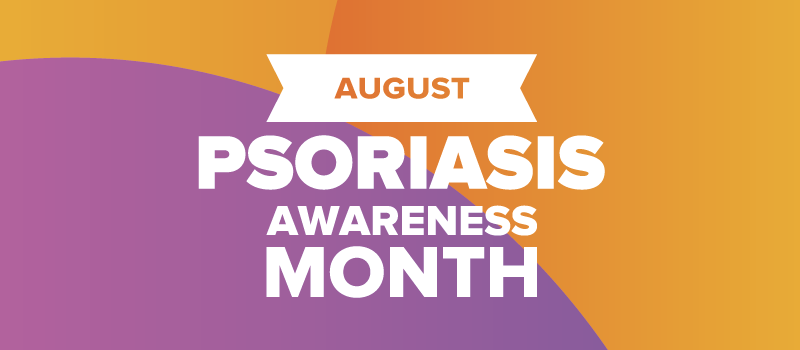What’s the Buzz
The Bee Healthy Blog
Rheumatic Fever Symptoms & Treatments

Key Takeaways
-
Rheumatic fever is an autoimmune disease that affects the heart, nervous system, skin, and joints. The main trigger for rheumatic fever is a streptococcal infection (strep throat or scarlet fever) that has been left untreated or not treated properly.
-
Symptoms of rheumatic fever include fever, painful, swollen, red, or tender joints, nosebleeds, fatigue, heart murmur, red rash, bumps in the skin, uncontrollable body movements, and loss of emotional control with inappropriate laughing or crying.
-
Rheumatic fever is treated using antibiotics, anti-inflammatories, steroids, and anti-seizure medicine. Proper treatment for strep throat and scarlet fever can prevent rheumatic fever and damage to a child’s heart.
Rheumatic fever is a severe inflammatory disease that affects the heart, nervous system, skin, and joints.
It is uncommon in the United States and other developed countries but can cause serious complications, including permanent damage to the heart muscle and heart valves (this is called rheumatic heart disease).
Please continue reading to find out the causes and symptoms of rheumatic fever as well as rheumatic fever treatment options.
What triggers rheumatic fever?
The main trigger for rheumatic fever is a streptococcal infection. You can develop rheumatic fever if infections caused by bacteria called group A Streptococcus bacteria or Streptococcus pyogenes are not treated properly.
Streptococcal bacteria commonly cause strep throat infections. In addition, streptococcal infections also cause scarlet fever.
Rheumatic fever is an autoimmune disease that develops 14-28 days after an untreated or improperly treated strep infection.
Experts believe that the bacteria trick the body’s immune system into attacking healthy tissues, including heart tissue. When the immune system attacks healthy tissue in the heart, for example, a heart valve, it causes inflammation and scarring of the heart valve over time. This leads to narrowing and leaking of the valve, making it harder for the heart to function, ultimately resulting in congestive heart failure many years later.
Who is at risk of rheumatic fever?
People with untreated strep infections are at risk of developing rheumatic fever. Other risk factors include living in unsanitary conditions, having a genetic predisposition to developing rheumatic fever (family history), and getting infected with certain strains of strep bacteria that are more likely to cause rheumatic fever.
Rheumatic fever typically affects children younger than 15 years of age but can also affect young adults.
What are the symptoms of rheumatic fever?
Signs and symptoms of acute rheumatic fever include:
-
Fever
-
Painful or tender joints, most often the wrists, elbows, ankles, and knees
-
Pain that migrates from one joint to another
-
Redness, warmth, and swelling of the joints
-
Fatigue
-
Chest pain
-
Painless red rash that is either flat or slightly raised and appears snake-like or ring-shaped with ragged edges
-
Small bumps in the skin
-
Sydenham chorea (uncontrollable body movements)
-
Loss of emotional control with inappropriate laughing or crying
What are the 5 major criteria for diagnosing rheumatic fever?
There is no single blood test to diagnose rheumatic fever. If a healthcare provider suspects rheumatic fever based on medical history and physical examination, they will order tests, including throat culture blood tests such as complete blood count (CBC), Antistreptolysin O (ASO) titre, and Erythrocyte Sedimentation Rate (ESR) as well as electrocardiogram (ECG) and echocardiogram to assess heart function.
The 5 major criteria for diagnosing rheumatic fever are:
-
Arthritis in multiple large joints
-
Skin rash
-
Bumps or nodules under the skin
-
Heart inflammation
-
Sydenham chorea (rapid, jerky movements)
Additional (minor) criteria for rheumatic fever diagnosis include:
-
Fever
-
Joint pain
-
Elevated ESR
-
Abnormalities on ECG
Doctors usually make a diagnosis of rheumatic fever if there are 2 major or 1 major and 2 minor criteria present, along with a history of strep throat infection.
What is the most common treatment for rheumatic fever?
Healthcare providers use the following medications to relieve symptoms and treat rheumatic fever:
Antibiotic therapy
Penicillin and other antibiotics are used to treat strep infections. A repeat course of antibiotics is usually prescribed to prevent a recurrence of rheumatic fever.
Long-term antibiotic treatment is recommended for children without carditis (inflammation of the heart muscle and tissue) until they are 21 years old or have completed 5 years of prophylactic antibiotics (whichever is longer).
Children with carditis but without residual heart damage should receive prophylactic treatment with antibiotics for 10 years or until they are 21 years of age (whichever is longer).
Anti-inflammatory medications
Nonsteroidal anti-inflammatory drugs (NSAIDs) such as aspirin and naproxen (Naprelan, Naprosyn, Aleve) are used to treat fever, pain, and inflammation.
Note: Children should never be given aspirin unless the child’s healthcare provider says it is okay.
Steroid medications
If severe rheumatic fever symptoms do not get better with over-the-counter anti-inflammatory drugs, corticosteroids may be prescribed to reduce inflammation.
Anti-seizure medications
Carbamazepine (Tegretol, Carbatrol), valproic acid, and other antiepileptic drugs are used to control severe involuntary jerky movements (Sydenham chorea).
Long-term treatment
If rheumatic fever develops after strep throat or scarlet fever, your child’s healthcare provider will recommend long-term follow-up care to evaluate for heart damage (rheumatic heart disease). This can develop many years, even decades, after an episode of rheumatic fever.
Will rheumatic fever go away on its own?
Rheumatic fever will not go away on its own. There is no cure for this serious condition, but treatments can help to manage the symptoms.
It is important to get an accurate diagnosis of rheumatic fever as soon as possible after symptoms develop. Timely treatment can limit the permanent damage caused by rheumatic fever.
Severe complications of rheumatic fever are rare but can include effects on the heart, blood vessels, central nervous system, skin, and joints.
How to prevent rheumatic fever?
Untreated strep throat is a major risk factor for rheumatic fever. Therefore, getting proper treatment for streptococcus infections (strep throat and scarlet fever) is the best way to prevent rheumatic fever.
Remember, rheumatic fever can cause permanent damage to a child’s heart. Do not delay contacting your child’s healthcare provider for common symptoms of a strep infection, such as sore throat, pain with swallowing, headache, fever, stomach pain, nausea, and vomiting.
Save on Your Medication with BuzzRx!
Manage your medication costs with BuzzRx coupons. Here are direct links to substantial savings for each medication:
-
Aspirin Coupon: Pay as low as $3.86 with BuzzRx coupons.
-
Naproxen Coupon: Typical retail price is $36.11, and with BuzzRx coupons, you could pay as low as $6.55.
-
Carbamazepine Coupon: The usual price is $55.98. Save with BuzzRx coupons, paying as low as $19.02.
-
Valproic Acid Coupon: Pay as low as $4.74 with BuzzRx coupons.
Remember, these coupons are widely accepted at over 60,000 pharmacies, including major chains like CVS, Walgreens, and Rite Aid. Just present your coupon at the pharmacy to ensure you're getting the best possible price.
References:












SOCIAL